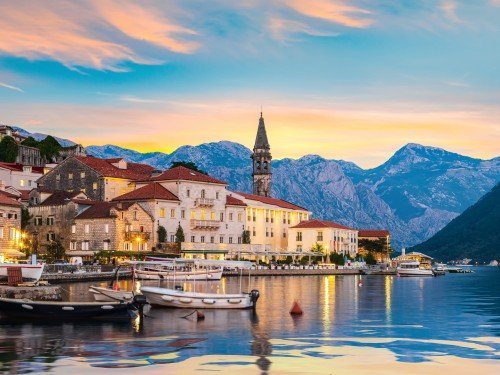Montenegro is also home to a rich and complex history that has shaped its identity as a nation

Montenegro, located in the Balkans, is a country rich in history and culture. Its diverse landscape ranges from rugged mountains to beautiful coastline, making it a popular destination for tourists. But beyond the natural beauty, Montenegro is also home to a rich and complex history that has shaped its identity as a nation.
One of the most notable historical sites in Montenegro is the town of Kotor, a UNESCO World Heritage Site. Kotor was founded during the Roman Empire and became an important center of trade and commerce in the Middle Ages. Its strategic location at the end of a deep bay made it a natural harbor and a key point of access to the Balkans.
Montenegrin cuisine is a blend of Mediterranean and Balkan influences, with an emphasis on fresh, locally sourced ingredients. The country's geography plays a significant role in its culinary traditions, with seafood, meats, and cheeses from the coast, and hearty stews and grilled meats from the mountainous regions.
One of the most popular dishes in Montenegro is cevapi, a type of grilled meat sausage made from beef and lamb, served with onions, flatbread, and a creamy sauce called kajmak. Another popular meat dish is raštan, a stew made with smoked beef and cabbage, served with mashed potatoes or polenta.
Seafood is also a staple of Montenegrin cuisine, particularly in coastal regions. Grilled or baked fish, octopus, and squid are commonly served, often with a side of blitva, a leafy green vegetable similar to Swiss chard.
Montenegro is also known for its cheese, particularly its white cheese, or sir, which is often served as a side dish or used as a filling for pies and pastries. Another popular cheese is kajmak, a creamy spread made from boiled milk that is often served with bread or used as a topping for meats and stews.
Desserts in Montenegro often feature fruits and nuts, such as figs, almonds, and walnuts. One popular dessert is baklava, a sweet pastry made with layers of phyllo dough and a filling of honey and ground nuts.
Overall, Montenegrin cuisine is a reflection of the country's diverse history and geography, with a mix of flavors and ingredients from its many cultural influences. Whether you're a meat lover or a seafood enthusiast, there's something for everyone to enjoy in Montenegro's delicious and hearty cuisine.
Over the centuries, Kotor was ruled by a variety of empires and powers, including the Byzantine Empire, the Venetian Republic, and the Ottoman Empire. Each of these influences left its mark on the town, resulting in a unique blend of architectural styles and cultural traditions.
Another important historical site in Montenegro is the Ostrog Monastery, a complex of buildings carved into a cliff face. The monastery was founded in the 17th century and is an important pilgrimage site for Orthodox Christians. The monastery's location and architecture make it a truly awe-inspiring sight, and it is considered one of the most important religious sites in the Balkans.
Montenegro's history is also marked by conflict and struggle. During World War II, Montenegro was occupied by Italy and Germany and saw intense fighting between the occupying forces and partisan fighters. After the war, Montenegro became part of the Socialist Federal Republic of Yugoslavia, which saw its own share of political and social upheaval.
Today, Montenegro is an independent country with a growing tourism industry. Visitors can explore its rich history and culture through its many museums, historic sites, and festivals. From the ancient town of Kotor to the stunning Ostrog Monastery, Montenegro's history is a testament to the resilience and spirit of its people.